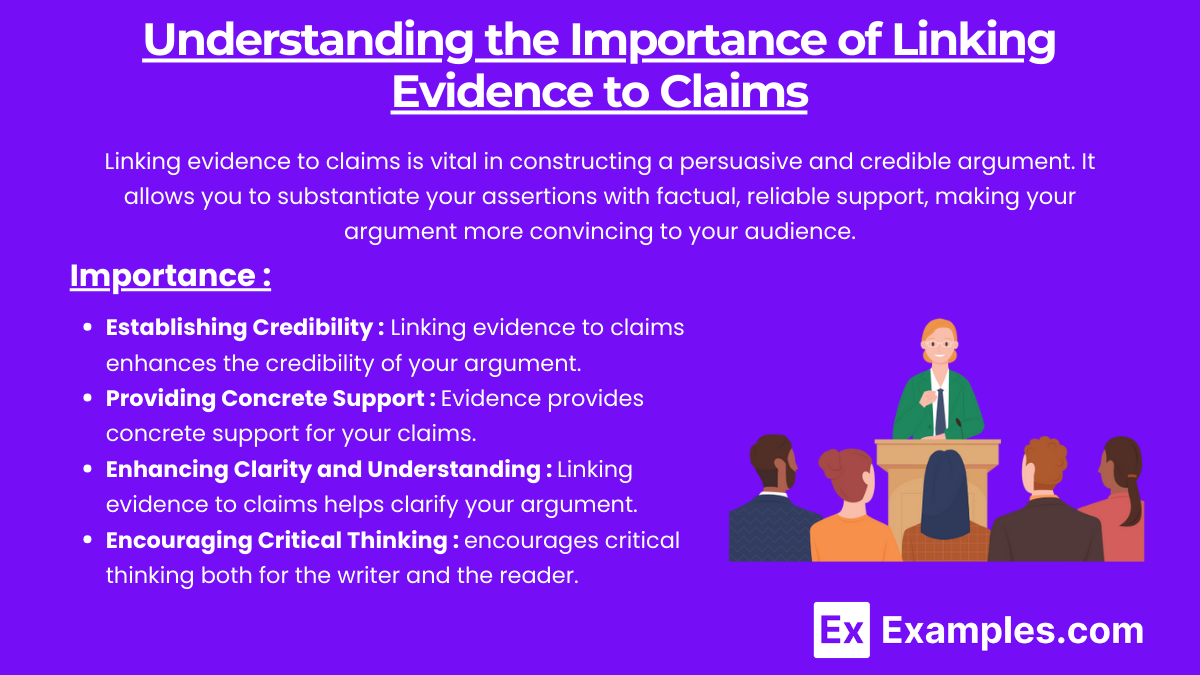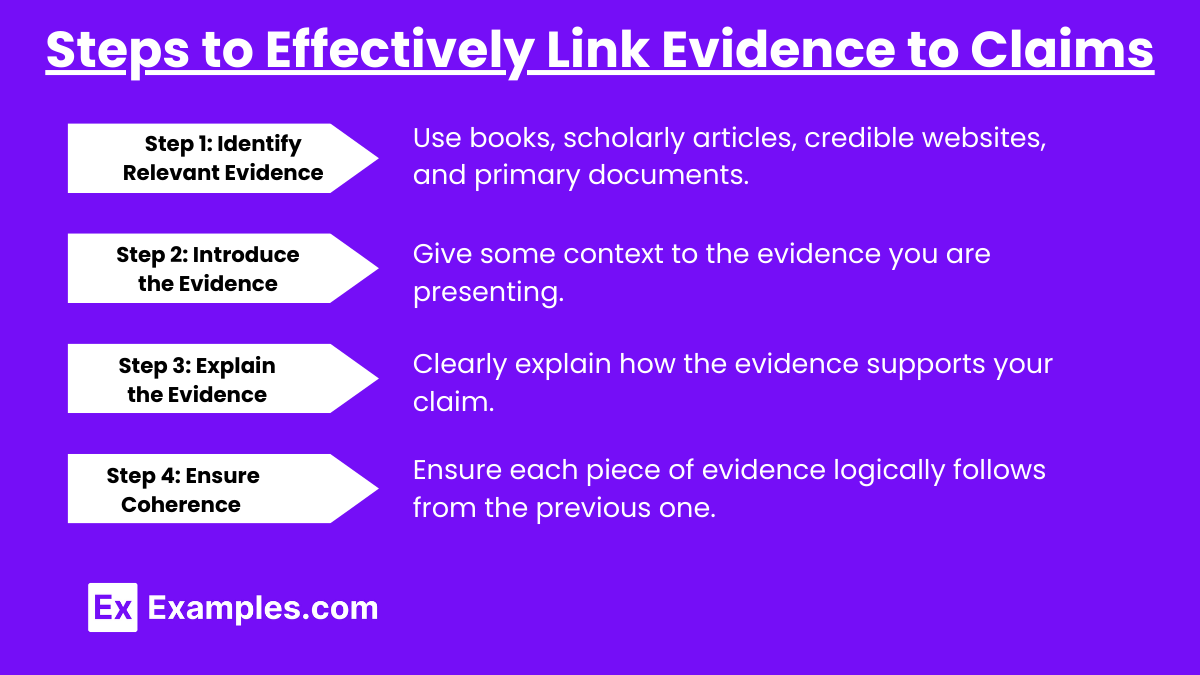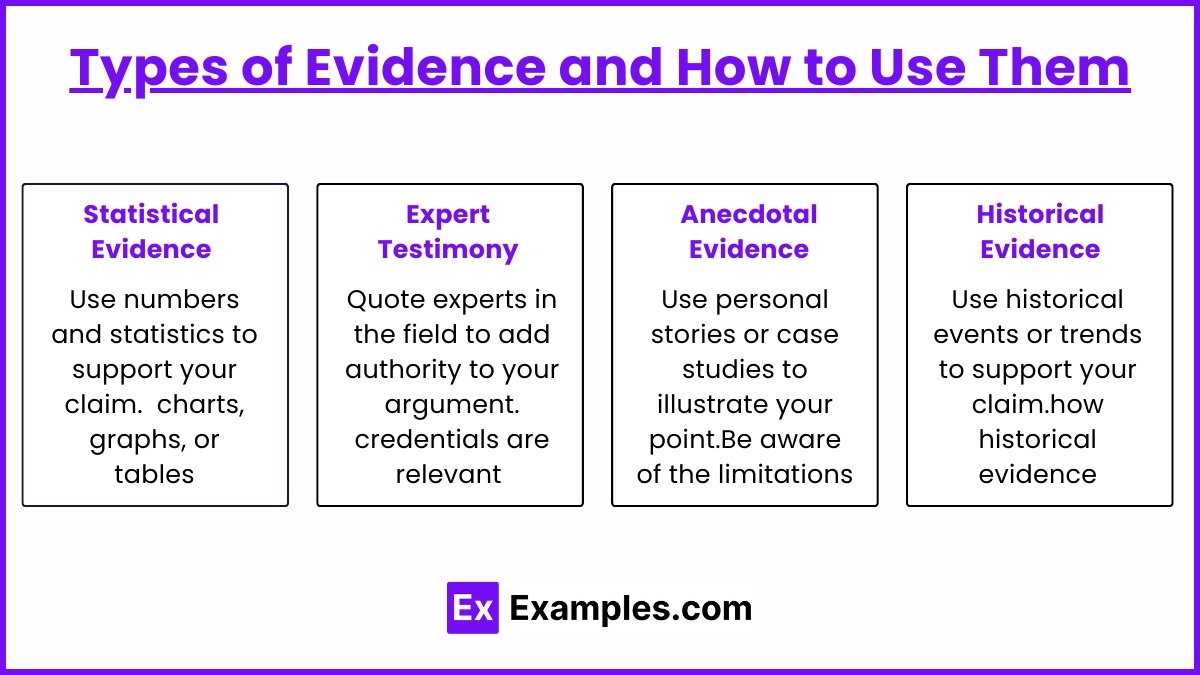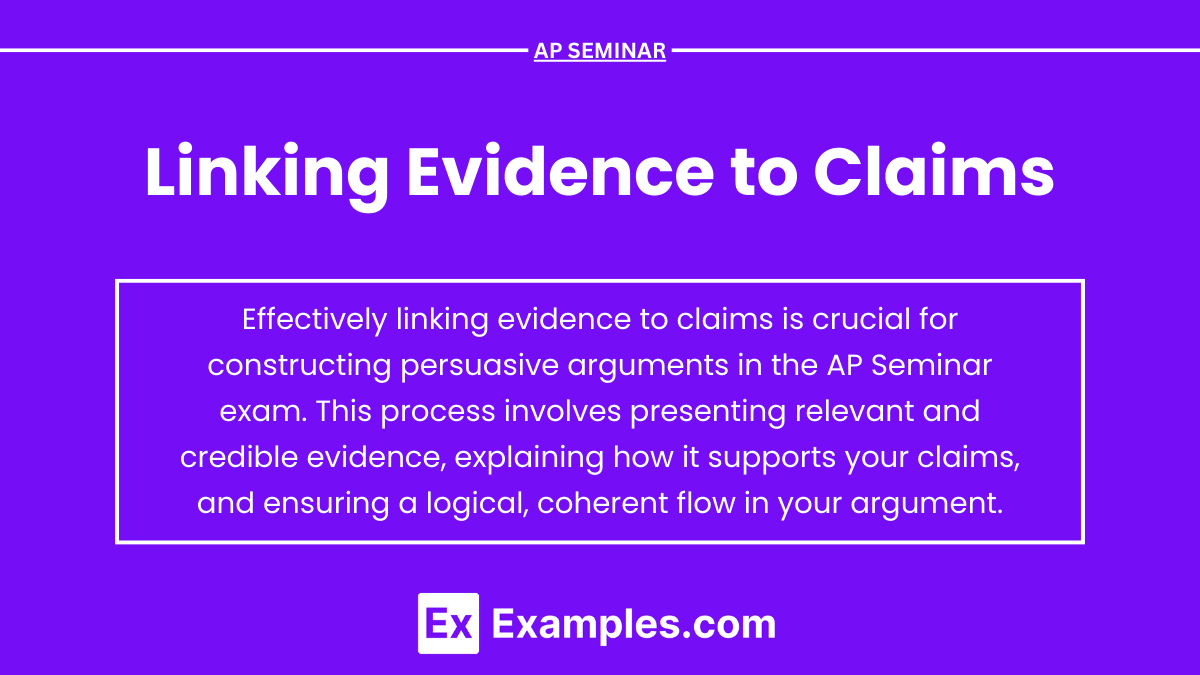Effectively linking evidence to claims is crucial for constructing persuasive arguments in the AP Seminar exam. This process involves presenting relevant and credible evidence, explaining how it supports your claims, and ensuring a logical, coherent flow in your argument. By mastering this skill, you enhance the credibility of your argument, demonstrate thorough understanding, and persuasively communicate your stance. Properly linking evidence to claims is essential for developing well-reasoned, compelling arguments that can withstand scrutiny and engage your audience.
Learning Objectives
In studying “Linking Evidence to Claims” for the AP Seminar exam, you should aim to learn how to identify and select credible evidence, clearly introduce and integrate this evidence into your argument, and effectively explain its relevance to support your claims. Additionally, focus on maintaining logical coherence and cohesion in your writing, ensuring that each piece of evidence is directly connected to your main argument. Mastering these skills will enable you to construct well-reasoned, persuasive arguments that can effectively communicate your position and withstand critical scrutiny.
Understanding the Importance of Linking Evidence to Claims

Linking evidence to claims is vital in constructing a persuasive and credible argument. It allows you to substantiate your assertions with factual, reliable support, making your argument more convincing to your audience. By clearly explaining and analyzing how your evidence supports your claims, you demonstrate critical thinking and a thorough understanding of your topic. This connection helps avoid logical fallacies and strengthens the overall integrity of your argument, ensuring that it is both compelling and trustworthy
1. Establishing Credibility : Linking evidence to claims enhances the credibility of your argument. It shows that your statements are not just based on opinions but are backed by solid evidence. This helps in:
- Building Trust: Readers are more likely to trust your argument if it is supported by reliable evidence.
- Demonstrating Expertise: Providing evidence shows that you have thoroughly research the topic.
- Example: Instead of merely stating that “exercise improves mental health,” citing studies from reputable sources such as the American Psychological Association strengthens your claim.
2. Providing Concrete Support : Evidence provides concrete support for your claims, making your argument more persuasive. It moves your argument from abstract ideas to concrete facts.
- Quantitative Evidence: Statistics, numbers, and data provide measurable support.
- Qualitative Evidence: Anecdotes, expert opinions, and case studies provide detailed, descriptive support.
- Example: Claiming that “renewable energy is cost-effective” is more convincing when supported by data showing the declining costs of solar and wind energy over the past decade.
3. Enhancing Clarity and Understanding : Linking evidence to claims helps clarify your argument, making it easier for your audience to understand. Clear evidence supports clear thinking.
- Logical Flow: Evidence helps to logically connect your claims, making your argument easier to follow.
- Detailed Explanation: Evidence provides the details needed to fully explain your claims.
- Example: If you claim that “online learning is effective,” providing evidence such as higher test scores and improved student engagement rates helps explain why this is true.
4. Addressing Counterarguments : Using evidence to support your claims also helps address counterarguments. It allows you to acknowledge opposing views while providing evidence to refute them.
- Balanced Argument: Acknowledging and refuting counterarguments with evidence shows that you have considered multiple perspectives.
- Strengthening Your Position: Addressing counterarguments with evidence makes your argument stronger and more resilient.
- Example: If critics argue that “online learning lacks personal interaction,” counter this by providing evidence of successful online collaborative projects and discussions.
5. Encouraging Critical Thinking : Linking evidence to claims encourages critical thinking both for the writer and the reader. It requires you to critically evaluate the evidence and consider how it supports your claims.
- Evaluating Sources: Assess the credibility and relevance of your evidence.
- Analyzing Data: Think critically about how the data supports your claims and what it implies.
- Example: When claiming that “climate change is influenced by human activity,” critically evaluate the sources of your evidence, such as peer-reviewed scientific studies, to ensure their reliability.
Steps to Effectively Link Evidence to Claims

Step 1: Identify Relevant Evidence
Gather Diverse Sources
- Variety of Sources: Use books, scholarly articles, credible websites, and primary documents.
- Primary vs. Secondary Sources: Include both primary sources (firsthand accounts) and secondary sources (analyses and interpretations).
Evaluate the Credibility of Sources
- Author Credentials: Check the qualifications and expertise of the authors.
- Publication Venue: Ensure the sources are published in reputable journals or platforms.
- Currency: Make sure the evidence is up-to-date and relevant to your argument.
Step 2: Introduce the Evidence
Contextualize the Evidence
- Provide Background: Give some context to the evidence you are presenting. Explain where it comes from and why it is relevant.
- Integrate Seamlessly: Incorporate the evidence smoothly into your writing without disrupting the flow.
Use Quotations and Paraphrases
- Direct Quotations: Use direct quotations when the exact wording is crucial.
- Paraphrasing: Paraphrase evidence to integrate it more naturally into your argument and demonstrate your understanding.
Step 3: Explain the Evidence (Warrant)
Analyze the Evidence
- Detailed Explanation: Clearly explain how the evidence supports your claim.
- Logical Reasoning: Use logical reasoning to connect the evidence to your claim.
Address Counterclaims
- Acknowledge Opposing Views: Consider potential counterclaims and explain why your evidence still supports your claim.
- Strengthen Your Position: Use evidence to refute counterclaims and reinforce your argument.
Step 4: Ensure Coherence and Cohesion
Maintain Logical Flow
- Clear Structure: Ensure each piece of evidence logically follows from the previous one.
- Transitions: Use transition words and phrases to maintain a coherent flow.
Consistent Argumentation
- Stay Focused: Keep your argument focused on your main claim.
- Reiterate Connections: Regularly remind the reader of how the evidence supports your claim.
Types of Evidence and How to Use Them

Statistical Evidence
- Quantitative Data: Use numbers and statistics to support your claim.
- Graphical Representation: Include charts, graphs, or tables to present statistical evidence clearly.
Expert Testimony
- Credible Experts: Quote experts in the field to add authority to your argument.
- Relevant Credentials: Ensure the experts’ credentials are relevant to the topic.
Anecdotal Evidence
- Personal Stories: Use personal stories or case studies to illustrate your point.
- Limitations: Be aware of the limitations of anecdotal evidence and use it to complement other types of evidence.
Historical Evidence
- Past Events: Use historical events or trends to support your claim.
- Contextual Analysis: Explain how historical evidence is relevant to the current issue.


